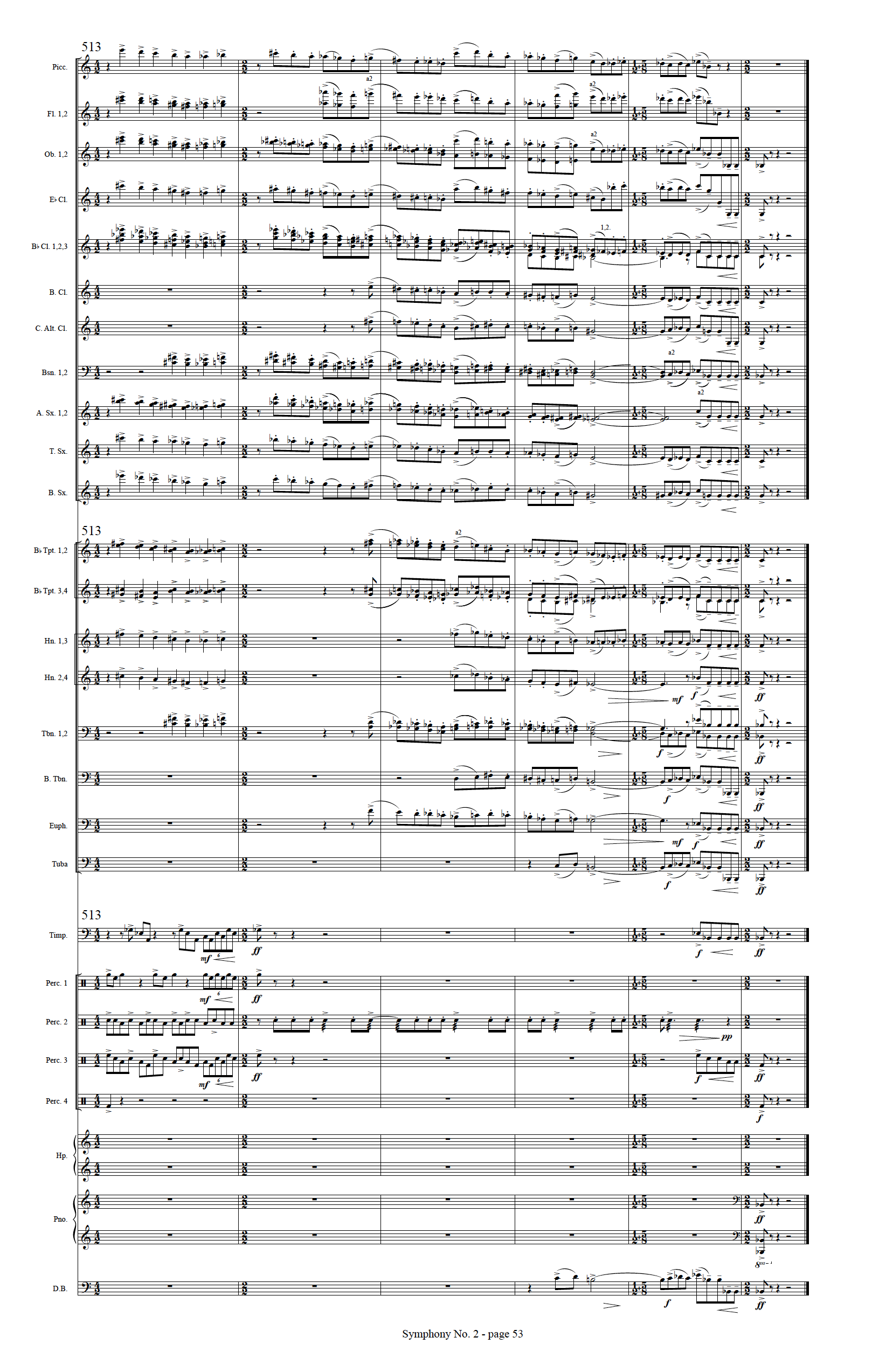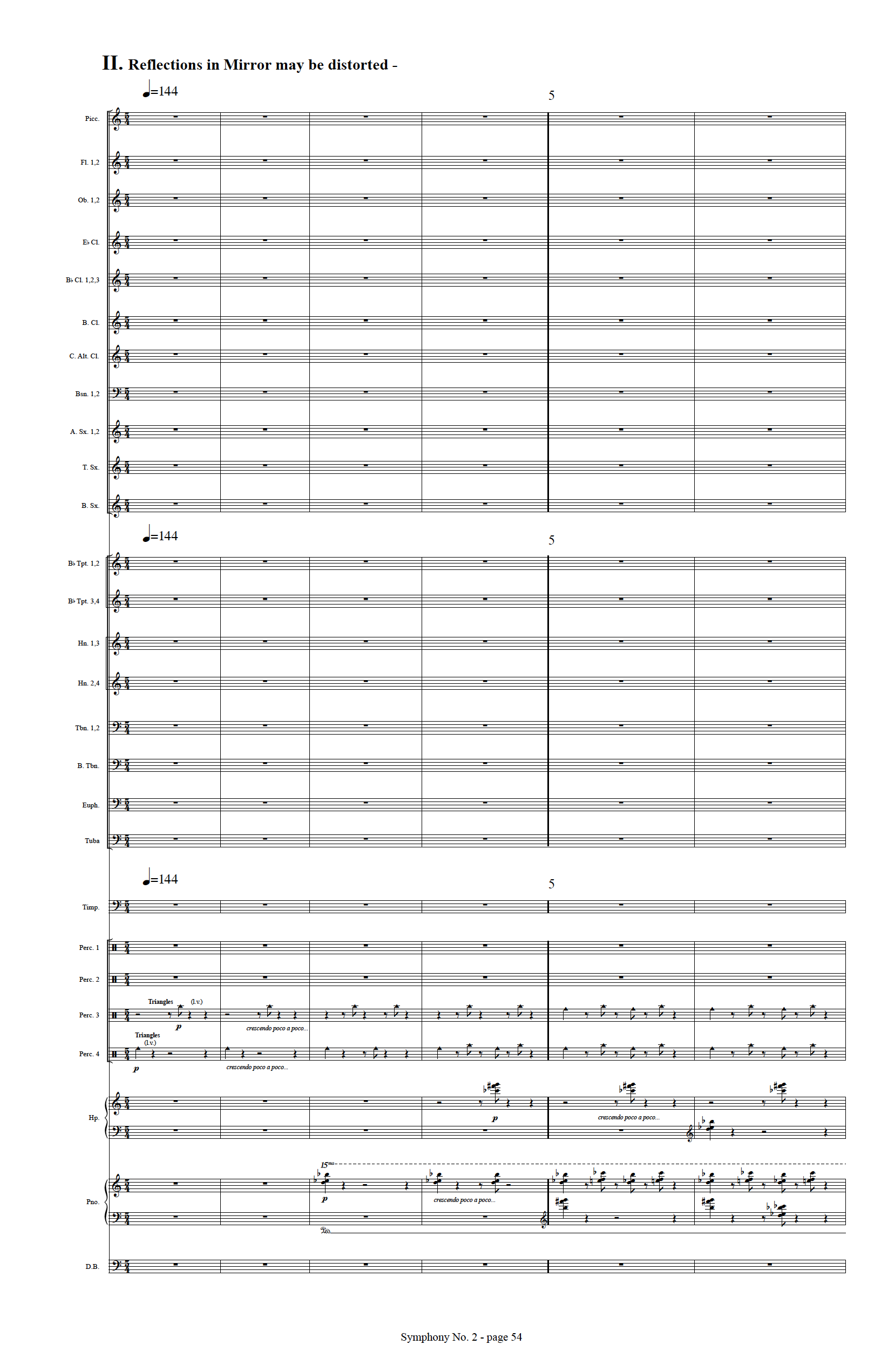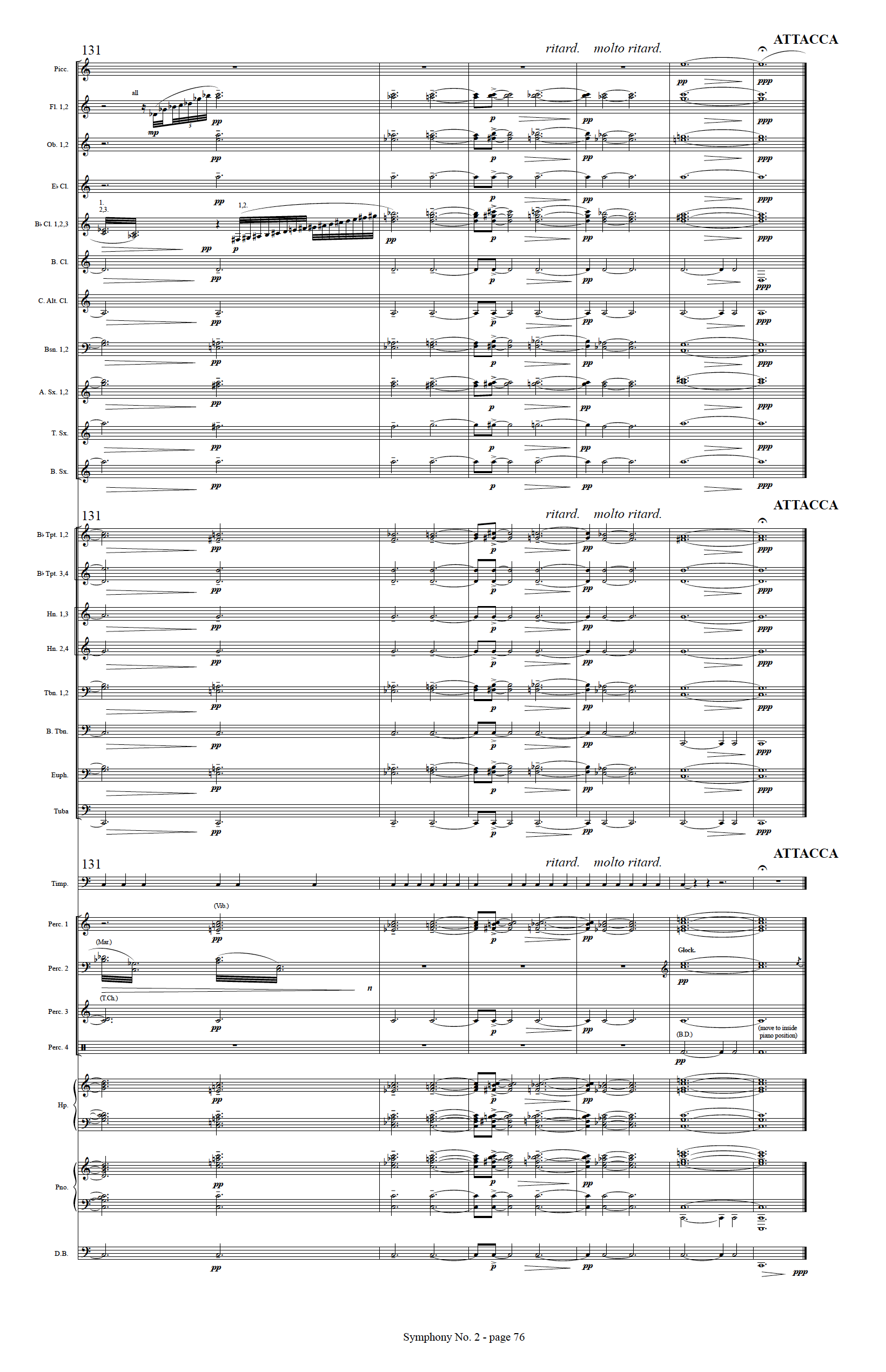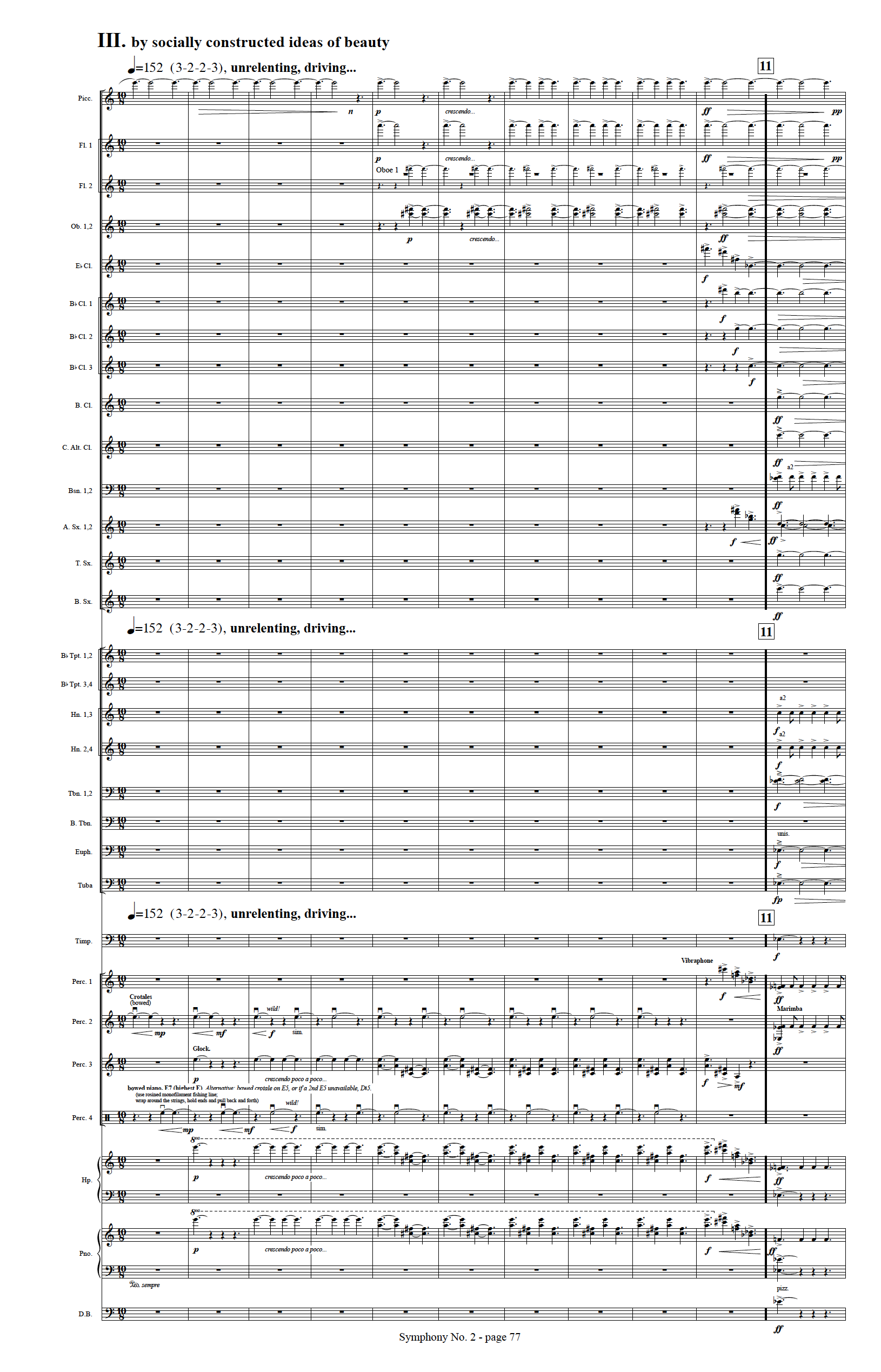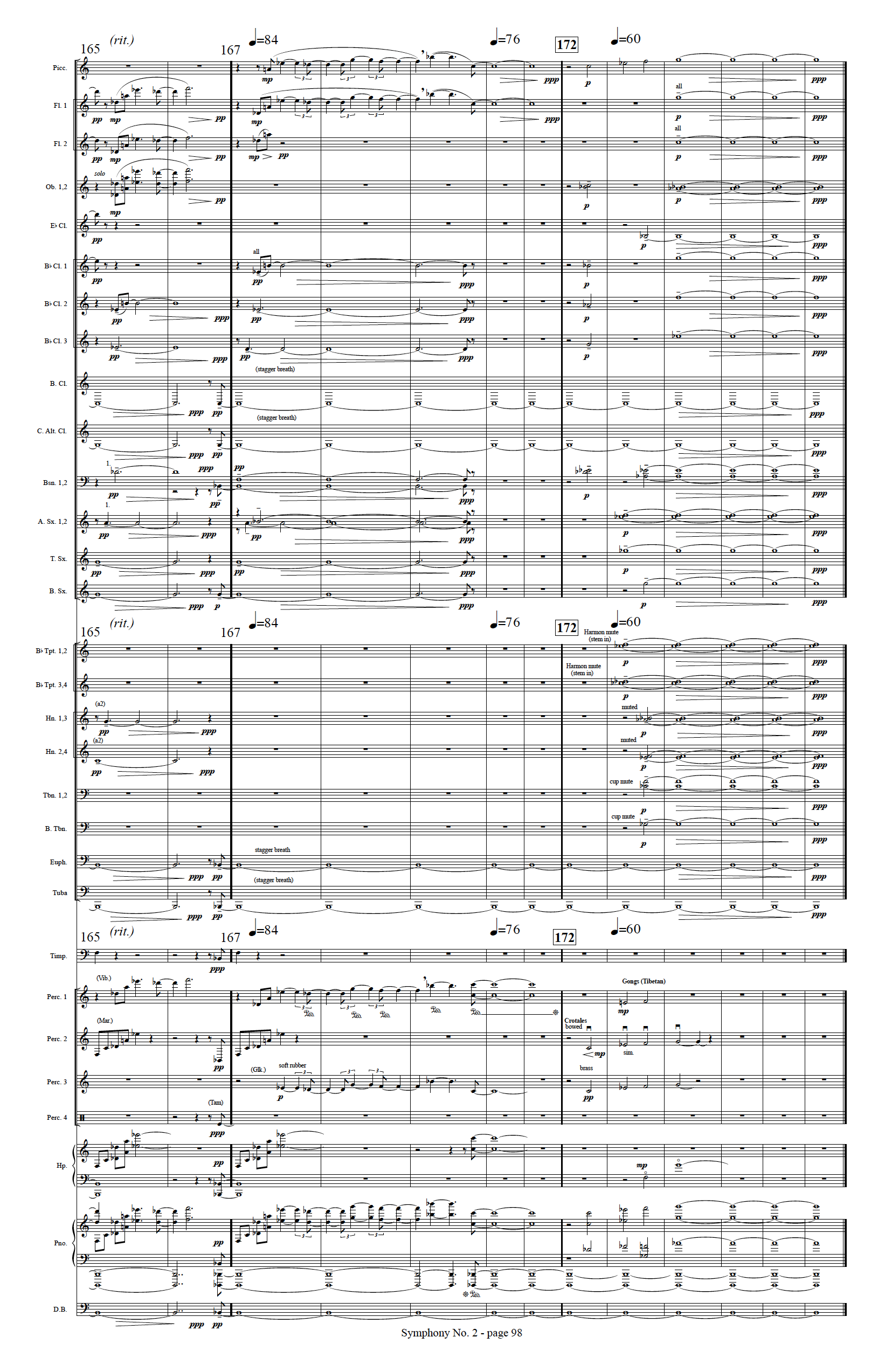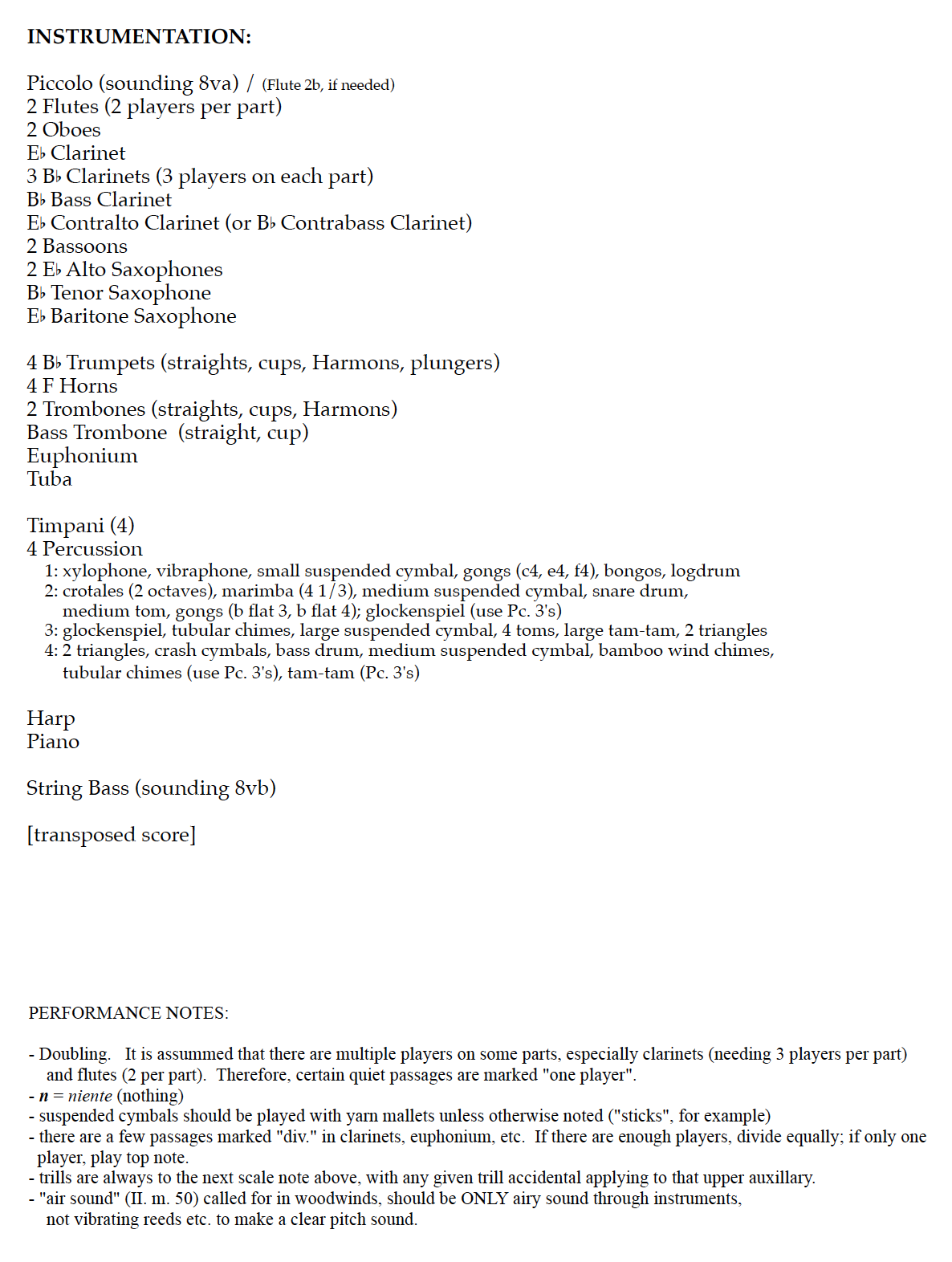Symphony No. 2 - Through a Glass, Darkly
(2016) for wind ensemble
- Objects in Mirror are closer than they appear
- Reflections in Mirror may be distorted -
- by socially constructed ideas of beauty
instrumentation: below
duration: 25 minutes
premiere:
University of South Carolina Wind Ensemble, Scott Weiss, conductor
September 25, 2016
Performance at the University of Louisville New Music Festival, Nov. 10, 2017
University of Louisville Wind Ensemble, Frederick Speck:
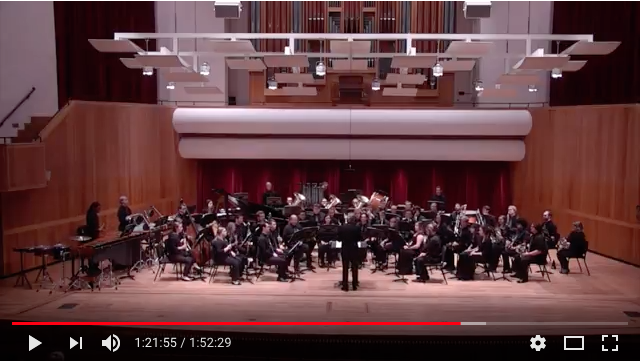
Indiana University Wind Ensemble, Stephen Pratt:
University of South Carolina Wind Ensemble, Scott Weiss:
CD recording:
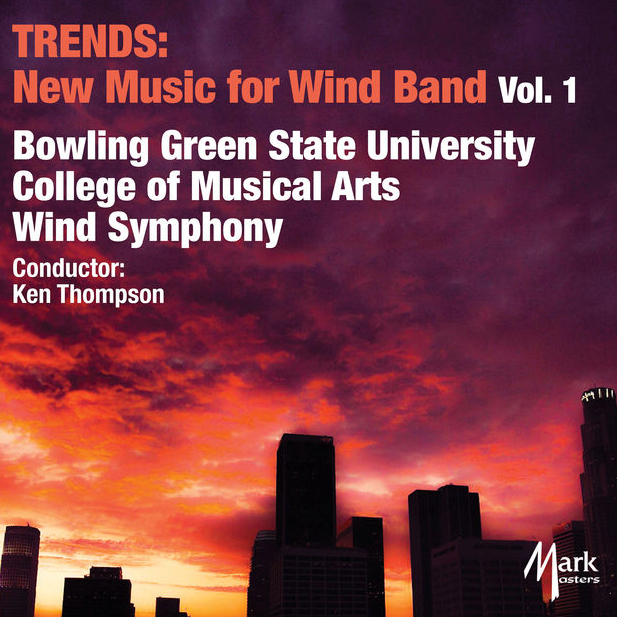
Mark Records Trends
BGSU Wind Ensemble, Ken Thompson
+ iTunes
Perusal Score:
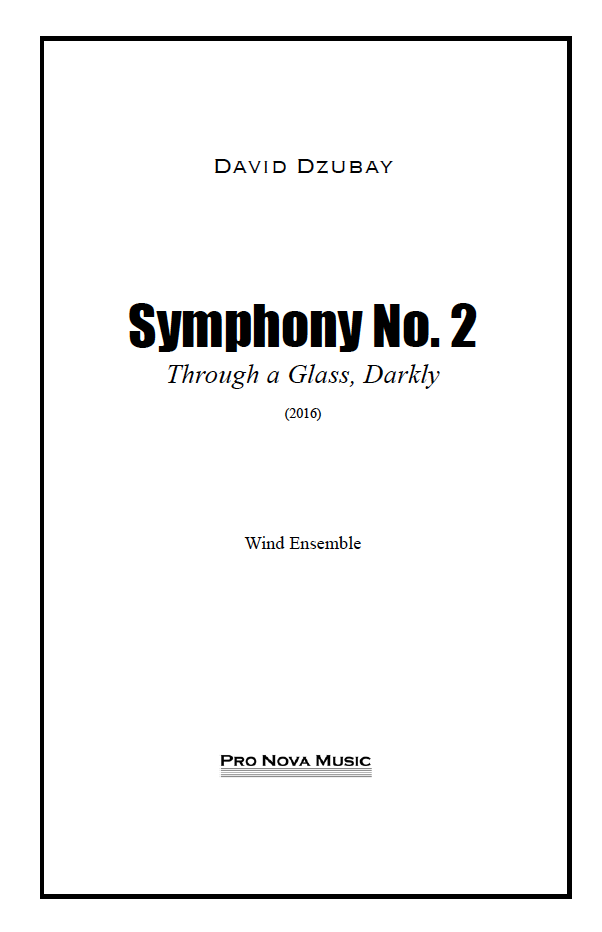
Commissioned by a consortium led by Scott Weiss and
the University of South Carolina School of Music, including:
Bowling Green State University (Bruce Moss)
Illinois State University (Martin H. Seggelke)
Indiana University (Stephen W. Pratt)
Troy University (Mark J. Walker)
University of Arizona (Chad R. Nicholson)
University of Arkansas (Chris Knighten)
University of Illinois (Stephen G. Peterson)
University of Kansas (Paul W. Popiel)
University of North Carolina – Greensboro (John R. Locke and Kevin M. Geraldi)
University of Southern California (H. Robert Reynolds and Sharon Lavery)
University of South Carolina (Scott Weiss)
Program Note
from 1 Corinthians Chapter 13:
When I was a child, I spake as a child, I understood as a child, I thought as a child: but when I became a man, I put away childish things.
For now we see through a glass, darkly; but then face to face: now I know in part; but then shall I know even as also I am known.
Mirrors are an integral part of the structure and experience of music. To my ears, most effective music has a
high degree of coherence, with myriad internal connections and relationships, both obvious and subtle, heard
and not-heard though perhaps subconsciously sensed. Though true for short pieces, where simplicity and
concise elegance can be so meaningful and convincing, this is at least as important in large scale compositions; indeed, coherence is at the heart of what makes a symphony a symphony. Motives, themes and even long passages may recur in varied contexts, reflecting their core identities yet becoming transformed, as though
seen “through a glass, darkly,” “glass” referring to an ancient mirror, likely of polished metal - a mirror that does not reflect a perfect image but rather through which one sees “darkly.” Musical mirrors appear in everything from melody and harmony to rhythm and form, at both small scale and large. Composers have long been fond of using mirroring techniques, including repetition, palindromes, retrogrades and inversions; sculpting forms that recall ideas in a new light; or creating tonal plans with balanced architecture. Further, a performance by a conducted ensemble might be thought of as the functioning of a series of mirrors, reflecting musical ideas from composer to score to conductor to musicians to audience. But like a game of telephone, the music is altered and shaped in subtle ways along the journey from composer to listener, with a multitude of interpretations factoring into the resultant sound.
While my first symphony was programmatic in nature, being dedicated to three influential teachers all of whom died early, this symphony is more in the tradition of absolute music, that is, without programmatic narrative. However, having stated that, I will also suggest that the music is expressive, and a listener is of course free to conjure their own interpretive narrative. Like many symphonies, there is a degree of struggle and resolution, which might lead to associations with the quoted text from Corinthians.
Cast in a three movement fast-slow-fast structure, the symphony focuses on a few central musical ideas - motives, melodies, chords, rhythms - and the number five, all of which are used throughout the work, transforming into ever new reflections of the initial musical impulses. Mirrors, small and large, abound.
David Dzubay, 2016
CONDUCTORS:
Here are five examples to consider using to introduce the work prior to performance. These examples illustrate a few central motives to listen for and ideas used throughout the piece, including various mirrors, the pattern 12212 (used both in pitch and rhythm), the number 5, alternating major seconds, minor triads, and the central ascending leap theme (example 1).
1. Mvt. 1, theme 1: FLUTES, m. 25-30. Ascending leap theme in minor triads – in particular a B flat triad "mirrored" or echoed an octave higher by C minor triad (with a pivot chord in between); embedded mirror patterns; motive (E flat, D flat, F, C). The ascending leap theme recurs in each movement, including at the very end of the symphony.
2. Mvt. 1, theme 2: m. 64-71
2a) TROMBONES, m. 64-67. B flat - C in trombone 1 echoes opening of theme 1 but without octave leap and in a new key, major second alternations - as recur throughout the symphony; 12212 pitch pattern.
2b) ALL LOW Ds, m. 64-67. 21221 rhythmic pattern, which is the retrograde of the trombone pitch pattern.
2c) 64-71. Combined (2a, 2b) and add TIMPANI, playing the Low D rhythm but twice as slow as the others.
3. Mvt. 1, theme 3: CLARINETS, m. 174-183. mirror (palindrome) shapes expanding and contracting from a central pitch.
That "mountain shape" turned on its side is a wedge shape, an idea that starts to emerge near the end of movement 1 and becomes central to movement 2.
4. Mvt. 2, mirrored harmonic wedge opening up from unison pitch: BRASS, m. 38-41. (no bass trombone or euphonium; tuba play 40-41 only); mvt. is in 5/4.
As suggested by the hyphen in the movement titles, there is no break between movements 2 and 3.
5. Mvt. 3, blues: TUTTI, m. 36-42. mirrors - high parts going up-down-up-down, low parts going down-up; the upper line's first interval perhaps suggests more ascending leaps, but then it gets stuck in alternating seconds and returns down to try again; meter is 10/8, divided 3-2-2-3 in a mirror of 5s.
The final phrase of the symphony echoes the blues melody, but this time reaching the perfect fifth rather than getting turned back at the flat fifth "blues note."




